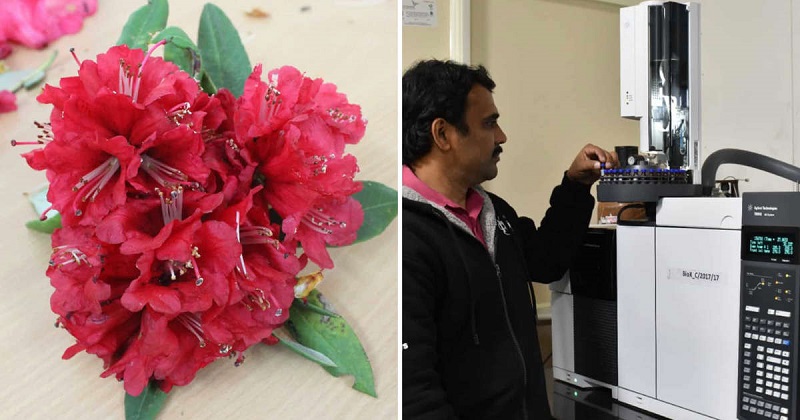
A normal study of phytochemicals (chemical substances generated by plants that help them fight fungus, viruses, and prevent animal ingestion) in Himalayan plants led to an unusual discovery.
According to researchers at the Indian Institute of Technology (IIT), Mandi, the petals of the frequently accessible plant ‘Himalayan Buransh’ (rhododendron arboreum), exhibit characteristics that hinder COVID-19 replication. This was demonstrated in a study with COVID-19-infected Vero E6 cells (cells from the kidney of an African monkey that are commonly used to study the infectivity of bacteria and viruses).
Dr Shyam Kumar Masakapalli, assistant professor, BioX Centre, School of Basic Science, IIT Mandi stated that since 2019, their team has been working to comprehend the Himalayan flora, including rare, endangered, aromatic, and medicinal plants. Their ultimate objective was to create a Himalayan Phytochemical Library that would aid in the understanding of plant-derived substances and aid in the treatment of certain ailments.
They accelerated their quest to develop plant-derived therapeutic capabilities against COVID-19 infection once the pandemic occurred in 2020. The qualities of Himalayan Buransh petals are believed to be being examined for the first time, despite the fact that the petals have long been a local delicacy.
Also Read: Earth is in a giant cosmic tunnel that connects two points: Study
While the leaves are poisonous to eat, the petals can be used as a garnish. Computational and biological investigations were carried out by extracting compounds from these petals. Researchers discovered that hot water extracts from the petals were high in quinic acid and its derivatives.
‘Molecular dynamics studies showed that these phytochemicals have two kinds of effects against the virus. They bound to the main protease – an enzyme that plays an important role in viral replication – and to the Human Angiotensin-Converting Enzyme-2 (ACE2) that mediates viral entry into the host cells’, Dr. Shyam Kumar said.
He explained how the test was carried out, saying that the COVID-19 virus was initially permitted to infect the cells generated from the monkey liver, after which some cells perished and the virus multiplied. However, when the plant-derived component was added (in various amounts), the viral load decreased and the virus’s effect was reduced by up to 80%.
However, it will take up to a year of research to determine whether this molecule can be used to develop a COVID-19 treatment (in tablet or spray form). Additional research, tests, and clinical trials are all part of this process.

Post Your Comments